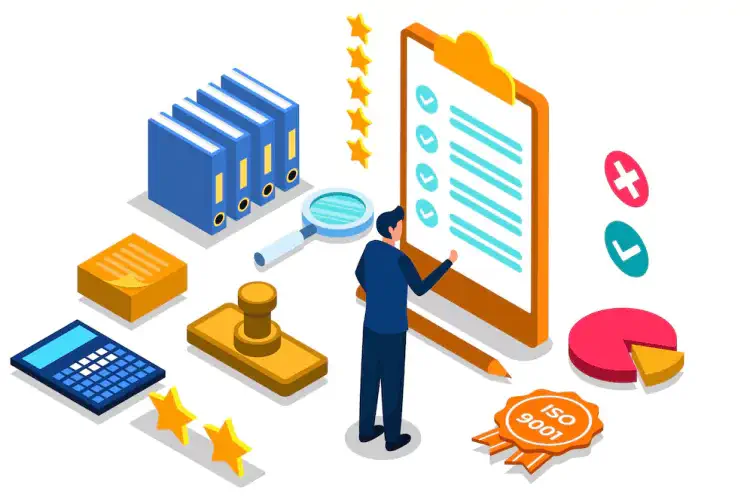Becoming a Salesforce Architect is a dream for Salesforce Developers and Tech Leads. This career transition is an essential step in their professional lives. Transitioning to Salesforce Architect requires much effort, especially shifting focus from implementation to broader architecture thinking. They needed a deep understanding of Salesforce Technical Architecture and the ability to design a scalable solution. These are also important for developers and tech leads, but architects must focus more on these essential skills.
The journey to becoming a Salesforce Architect involves gaining expertise in different areas, including data modeling, security, integration, external systems, and more. To transition into this role, they must enhance their technical skills, develop a strategic mindset, and gain experience designing and managing complex systems. This post will provide essential steps to this transition.
1. Master Salesforce Fundamentals
Salesforce Architects must comprehensively understand the platform’s data models, metadata-driven development, and multi-tenant architecture. These skills are basic but essential for architects. Developers/Leads should deep-dive into the Salesforce Security model, including roles, profiles, permission sets, and sharing rules. These skills are required in each project and are the basis for application security.
Data modeling is another skill frequently required and essential for application architecture. If the wrong model is generated, the application performance can be affected. For example, The architect should know where to create lookup and master-detail relationships. One relationship creates a loosely coupled relationship between objects, and another makes a tight coupling relationship between objects. So, architects must know where to build these relationships.
Essential Concepts for Salesforce Architects
- Salesforce Data Model
- Multi-Tenant Architecture
- Security Model
- Declarative vs. Programmatic Development
- Salesforce Release Management
- Governor Limits
- Salesforce Ecosystem and Products
- Salesforce Development Lifecycle
- Salesforce AppExchange and Third-Party Tools
- Salesforce Licensing and Pricing Models
- Data Migration and Management
- Salesforce Reporting and Analytics
2. Master Integration Patterns
Modern enterprise environments often require Salesforce to interact seamlessly with various other systems. This requires a complete understanding of Salesforce Integration Patterns. Effective integration ensures data flows smoothly across platforms, allowing consistent business processes and a unified view of customer data.

Why mastering integration patterns is critical
- Integration patterns ensure that data is exchanged between multiple systems efficiently and reliably.
- Different businesses require different kinds of business logic implementation. Some required real-time processing, and some needed batch processing. Mastering integration patterns helps identify the correct architecture.
- The volume of data and transactions grows when the organization grows. Integration patterns help to ensure that systems remain scalable and capable of handling increasing loads without compromising performance.
- Integration patterns significantly contribute to data consistency across systems, lowering the risk of data discrepancies, which can lead to errors in reporting and decision-making.
How to Master Integration Patterns
- Salesforce Documentation and Trailhead module provides comprehensive documentation. Start with this documentation.
- Build real-time integration projects to get hands-on experience.
- Learn about middleware tools like MuleSoft, Dell Boomi, Talend, and Informatica. These are required for enterprise-level architecture.
- Learn about event-driven architecture that helps with near real-time integration. Event-driven technologies include platform Events, Change Data Capture (CDC), and the Salesforce Streaming API.
3. Learn Design Patterns
Learning design patterns is essential for Salesforce Architects, as these patterns provide a proven solution to common design problems. Mastering design patterns can help a Salesforce Architect create scalable, maintainable, and efficient solutions that follow best practices.
Why Salesforce Architects Should Learn Design Patterns
- Design patterns encourage code consistency by providing a standard solution for resolving recurring issues. This consistency makes it easier for teams to understand and maintain the code.
- Design patterns help create scalable solutions. It provides frameworks that can handle increasing work or data without sacrificing performance.
- Well-applied design patterns produce clean, modular code that is easier to maintain and extend. This reduces the chances of bugs and streamlines adding new features.
- Design patterns are frequently associated with best practices in software engineering. By utilizing them, a Salesforce Architect ensures that the solutions are robust and meet industry standards.
How to Learn Design Patterns as a Salesforce Architect
- Begin by learning fundamental design patterns widely applicable across various programming languages. The “Gang of Four” book (“Design Patterns: Elements of Reusable Object-Oriented Software“) is a timeless resource.
- Learn about design patterns that are particularly useful within the Salesforce ecosystem. Salesforce offers guidance on best practices and patterns optimized for its platform.
- Use design patterns in your current projects. Begin with small implementations and gradually expand to larger, more complex systems.
4. Understand Enterprise Architecture
Understanding Enterprise Architecture (EA) is essential for a Salesforce Architect because it ensures that Salesforce solutions align with the organization’s overall IT strategy. EA offers a comprehensive view of an organization’s IT landscape, assisting in effectively integrating Salesforce with other systems and ensuring that solutions are scalable, secure, and aligned with long-term business objectives.

Why Understanding Enterprise Architecture is Important for a Salesforce Architect
- Enterprise Architecture ensures that IT systems and solutions contribute to the overall business strategy. To design solutions that deliver business value, a Salesforce Architect must first understand how Salesforce fits into the organization’s overall goals.
- Understanding EA helps integrate Salesforce with other enterprise systems, such as ERP, HR systems, and data warehouses, resulting in seamless data flow and interoperability.
- EA contributes to the design of systems that can scale as the business grows. A Salesforce Architect must ensure that the Salesforce implementation can handle increased data volumes, users, and new functionalities while maintaining performance.
- Security and regulatory compliance are critical aspects of EA. Salesforce Architects must ensure that solutions adhere to organizational security policies and regulations such as GDPR and HIPAA.
- EA offers a framework for managing IT costs. A Salesforce Architect must create cost-effective solutions that are consistent with the organization’s IT budget and resource allocations.
- EA plans for disaster recovery and business continuity. A Salesforce Architect must ensure that the Salesforce implementation is resilient, with clear plans in place for data recovery and operational continuity.
How to Understand and Implement Enterprise Architecture as a Salesforce Architect
- Work closely with the organization’s Enterprise Architects and IT leadership to comprehensively understand the Enterprise Architecture framework. This includes understanding the organization’s IT strategy, technology stack, data governance policies, and compliance requirements.
- You can familiarize yourself with popular EA frameworks such as TOGAF (The Open Group Architecture Framework) and Zachman Framework. These frameworks offer structured approaches to designing and implementing enterprise-wide architecture.
- Get an overview of the organization’s IT systems, data flows, and infrastructure. This includes understanding how various systems interact, what integrations exist, and how Salesforce fits in.
- When designing Salesforce solutions, consider the overall enterprise architecture. This includes how Salesforce integrates with other systems, scales, and meets security and compliance standards.
- Stay up to date on new developments in Salesforce and Enterprise Architecture. This includes learning about new Salesforce features, tools, and best practices and updating EA methodologies.
- Use EA tools and platforms to document and analyze Salesforce architecture in the context of the entire organization. Tools like ArchiMate, Sparx EA, and Salesforce’s architecture tools can also be helpful.
5. Develop Solution Design Skills
Solution Design Skills are critical for a Salesforce Architect because they allow the architect to translate business requirements into scalable, secure, and efficient technical solutions consistent with business objectives and Salesforce best practices.
Why Solution Design Skills Are Important
- Solution design skills enable an architect to understand and translate complex business requirements into a technical architecture that achieves the organization’s objectives.
- Solutions must be scalable to support future growth and flexible enough to adapt to changing business requirements.
- Poorly designed solutions can cause performance issues like slow load times and inefficient data retrieval. Solution design skills ensure that the system performs optimally.
- Most businesses have multiple systems, and Salesforce frequently needs to integrate with them. Solution design skills contribute to seamless integrations and data integrity.
- A well-designed solution reduces technical debt, resulting in easier maintenance and lower long-term costs.
How to Develop Solution Design Skills
- Gain a thorough understanding of the business processes and their relationship to Salesforce. Collaborate with stakeholders to gather requirements and understand the underlying business objectives.
- Work on real-world projects to gain practical experience. This is where theoretical knowledge meets practical application, and you will learn to make trade-offs in design decisions.
- Always design for scalability. Consider future growth, user load, and data volume when developing solutions.
- Use Salesforce resources such as the Well-Architected Framework, Architect Guides, and Trailhead modules to improve your understanding and stay current on best practices.
- Solution design is a constantly changing field. Stay current with Salesforce releases, new features, and industry trends.
6. Gain Experience with Salesforce Clouds
Gaining experience with various Salesforce Clouds is essential for a Salesforce Architect because it allows them to design comprehensive, tailored solutions that fully utilize the Salesforce platform. Each Salesforce Cloud is intended to meet specific business requirements, and understanding these Clouds enables an Architect to develop more effective, industry-specific solutions.
Why Experience with Salesforce Clouds is Important
- Salesforce Architects must create solutions that work across multiple clouds. Each Cloud has unique features and capabilities that can be applied to specific business processes.
- Salesforce provides industry-specific clouds, such as the Financial Services Cloud, Health Cloud, and Manufacturing Cloud. Understanding these enables architects to create solutions tailored to industry regulations, workflows, and best practices.
- By understanding various clouds’ capabilities, an architect can design solutions that maximize a client’s return on investment (ROI).
- Businesses evolve, and their needs shift over time. Experience with multiple Salesforce Clouds enables an Architect to create scalable and adaptable solutions that can easily incorporate new Clouds as the company grows.
How to Gain Experience with Salesforce Clouds
- Salesforce’s extensive documentation and Trailhead modules can help you learn about each Cloud’s capabilities and best practices.
- Obtain certifications for various Salesforce clouds. Salesforce provides specialized certifications for various Clouds, which improve knowledge and validate experience.
- Join Salesforce user groups, forums, and events like Dreamforce to learn about other people’s experiences with various Clouds.
7. Develop Leadership Skills
Leadership skills are essential for a Salesforce Architect because the role involves more than just technical expertise—it also includes guiding teams, influencing stakeholders, and ensuring that solutions align with the overall business strategy.
Why Salesforce Architects Need Leadership Skills
- Salesforce Architects are responsible for making high-level decisions that affect the entire organization. They must align technical solutions with business objectives, which requires a strategic mindset.
- Salesforce projects frequently involve several teams, including developers, business analysts, project managers, and stakeholders from various departments. A Salesforce Architect must lead these cross-functional teams to ensure everyone is on the same page.
- Salesforce Architects are frequently expected to mentor junior developers and other team members as leaders. This contributes to forming a robust and skilled team capable of providing high-quality solutions.
- Architects must communicate complex technical concepts to non-technical stakeholders, such as executives and business leaders so that they understand the benefits and limitations of proposed solutions.
How to Develop Leadership Skills as a Salesforce Architect
- Practice presenting technical concepts in a way that non-technical stakeholders will understand. This may include formal presentations or informal discussions.
- Work on understanding and managing your own emotions, as well as being compassionate toward others. This aids in team management and conflict resolution.
- Find an experienced leader to mentor you, preferably another Salesforce Architect or someone in a senior IT leadership role. Ask for feedback on your leadership style and areas for improvement regularly.
- Improve your understanding of your organization’s business strategy. This will enable you better to align your technical decisions with the organization’s goals and contribute to strategic discussions.
- Actively accept responsibility for the project’s success or failure. This includes being accountable for decisions and taking the initiative when problems arise.
- Enroll in leadership development programs or workshops, especially those designed for IT or technology professionals, focusing on developing leadership skills.
8. Understand Governance and Compliance
Understanding governance and compliance is critical for a Salesforce Architect because it ensures that solutions designed meet business requirements and adhere to legal, regulatory, and organizational standards.

Importance of Governance and Compliance
- With the growing importance of data security and privacy, particularly under regulations such as GDPR (General Data Protection Regulation) and CCPA (California Consumer Privacy Act), it is critical to ensure that customer data is secure.
- Many industries, such as healthcare and finance, have specific regulatory requirements for storing, accessing, and processing data. Understanding these regulations is critical for ensuring that Salesforce implementations comply with them.
- Governance ensures that Salesforce is used consistently across the organization. This includes standardizing data models, coding practices, and workflows to ensure system integrity and future scalability.
- A robust governance framework helps detect and mitigate data breaches, system failures, and unauthorized access risks.
How a Salesforce Architect Can Ensure Governance and Compliance
- Define clear policies for Salesforce data management, security, user access, and development practices.
- Use Salesforce Shield to improve encryption, monitoring, and auditing capabilities.
- Define roles in Salesforce and assign appropriate permissions to ensure that users have access only to data and functionalities relevant to their jobs.
- Conduct regular audits to ensure that user roles and permissions are up to date and that organizational policies are followed.
- Categorize data according to its sensitivity (e.g., public, internal, confidential) and follow the appropriate handling procedures for each category.
- Ensure that sensitive data, such as personally identifiable information (PII), is encrypted both at rest and during transmission.
9. Stay Updated with Salesforce Innovations
Salesforce is a rapidly evolving platform that constantly adds new features, tools, and best practices. Awareness of these developments is critical for an architect who wants to design optimal, future-proof solutions that use cutting-edge technology and meet ever-changing business requirements.
By staying up to date on Salesforce innovations, an Architect can ensure that their solutions follow the latest updates and are optimized to take advantage of the platform’s full capabilities. Continuous learning and adaptation are critical for delivering value-driven solutions that align with business objectives and technological advancements.
10. Contribute to the Salesforce Community
Contributing to the Salesforce community is an essential part of being a Salesforce Architect. It promotes personal growth and benefits the ecosystem by sharing knowledge, encouraging innovation, and establishing a robust professional network.

Why Contribute to the Salesforce Community?
- Salesforce Architects share their knowledge and experiences with the community, allowing others to learn and grow.
- Engaging with the community keeps Salesforce Architects updated on the latest trends, tools, and best practices in the Salesforce ecosystem.
- Salesforce Architects can improve their professional reputation by actively participating in the community.
- The Salesforce community is a global network of professionals. Contributing allows architects to connect with like-minded people, peers, and mentors.
- Salesforce architects frequently benefit from the knowledge and resources shared by others. Contributing is a way for people to give back to the community that has helped them grow.
How to Contribute to the Salesforce Community
- Share insights, best practices, and technical guides by writing blogs or articles for platforms like Medium, LinkedIn, or Salesforce-related blogs.
- Participate in or organize webinars, meetups, and conferences to share your expertise and experiences.
- Contribute to or start open-source Salesforce projects, such as custom Lightning components, Apex libraries, or integrations.
- Actively participate in forums such as Salesforce Stack Exchange, Trailblazer Community, and Reddit to answer questions and provide guidance.
- Participate in organizing Salesforce community events such as Dreamin’ events, community conferences, and local user groups.
11. Engage in Hands-On Architect Projects
Hands-on architect projects are critical for a Salesforce Architect’s development and effectiveness. It fills the gap between theoretical knowledge and practical experience, allowing architects to design and implement solutions that address real-world problems.
Why Hands-On Architect Projects Are Important
- While certifications and theoretical knowledge are important, hands-on experience helps architects apply that knowledge in real-world scenarios.
- Real-world projects frequently pose unexpected challenges. Working on these projects helps architects improve their problem-solving abilities and adapt to new situations.
- Architects must collaborate closely with business leaders, developers, and end users. Hands-on projects allow you to improve your communication and negotiation skills.
- The Salesforce ecosystem is constantly evolving. Hands-on projects allow architects to use the most up-to-date features, tools, and best practices.
How to Engage in Hands-On Architect Projects
- Volunteer to lead or contribute significantly to projects requiring architectural decisions. This could entail creating new systems, optimizing existing ones, or connecting Salesforce to other platforms.
- Volunteer your skills for non-profit or community projects. These frequently present unique challenges and provide an excellent opportunity to gain experience while giving back.
- Through proof-of-concept projects, architects can experiment with new technologies or solutions in a controlled environment before fully implementing them.
12. Self Confidence
Self-confidence is essential for a Salesforce Architect because it directly influences decision-making, leadership, and the ability to navigate complex challenges. As an Architect, your responsibilities include designing solutions that align with business objectives, managing stakeholder expectations, and guiding teams through technical obstacles. Confidence in your abilities and decisions allows you to advocate for the best solutions, even if they challenge the status quo.
For example, you’re leading a project, and the client insists on a specific implementation approach that you know isn’t scalable. A confident Salesforce Architect would clearly articulate the risks, offer a better alternative, and explain the long-term benefits of the new approach. Without confidence, persuading stakeholders to accept your recommendations would be difficult, potentially leading to suboptimal results.
13. Presentation Skills
A Salesforce Architect’s main job is to explain complicated technical solutions to business leaders, technical teams, clients, and other important people. The architect must be able to translate technical terms into clear, practical insights that people who aren’t technical can understand. This skill is very important for getting people on board, aligning project goals, and ensuring that the solutions being offered meet business goals.

How to Develop Good Presentation Skills
- Understand Your Audience: Match your presentation to the audience’s knowledge and interests. When presenting to executives, emphasize business results over technical specifics.
- Structure Your Content: Start with the issue, then the solution, and conclude with the advantages and future actions. This format keeps the audience interested and explains your point.
- Use Visual Aids: Diagrams, charts, and pictures can simplify complicated topics. Architectural diagrams, for example, can show how Salesforce components interact in your solution.
- Practice Clarity and Brevity: Communicate clearly and concisely. Don’t overload your audience with information. For instance, when describing a multi-cloud approach, emphasize essential integrations and their advantages rather than technical details.
- Engage with the Audience: Invite audience questions and comments during the presentation. This will engage the audience, allow you to assess their comprehension, and allow you to adapt your explanations.
14. Negotiation Skills
Salesforce Architects are in charge of combining business goals and technology applications. They work with clients, project managers, coders, and end users, each with their own needs and goals. To combine these different points of view and ensure that the end answer meets business goals, is technically possible, and stays within budget, Salesforce Architects need to be good at negotiating.
How to Develop Negotiation Skills
- Know What Stakeholders Want: To negotiate well, you need to know what all stakeholders want, what worries them, and their goals. To do this, you need to listen and understand actively.
- Clear Communication: Help non-technical partners understand the trade-offs by clarifying the technology limits and possibilities.
- Be Prepared to Compromise: Know where you can be open and where you need to stand firm. Be ready to compromise. Finding a middle ground that works for everyone is a big part of negotiating well.
Summary
Transitioning from Salesforce Developer/Tech Lead to Salesforce Architect is a continuous learning and skill development journey. You can effectively position yourself for this advanced role by mastering the core architectural principles, expanding your design and integration skills, and developing your leadership abilities. It’s about thinking big, understanding the ramifications of your decisions, and becoming a trusted advisor within your organization. You can make this transition and significantly advance your career in the Salesforce ecosystem by combining practical experience, ongoing education, and a strategic approach to problem-solving.
References
Which Salesforce Architect Certification Should I Take?
Related Posts
Understanding the Salesforce Well-Architected Framework to Enhance Business Outcome
Streamlining Authentication: Custom Login Flow in Salesforce
Best Code Analysis Tools For Salesforce Development
Steps for Successful Salesforce Data Migration
